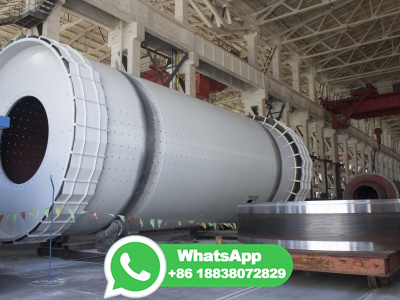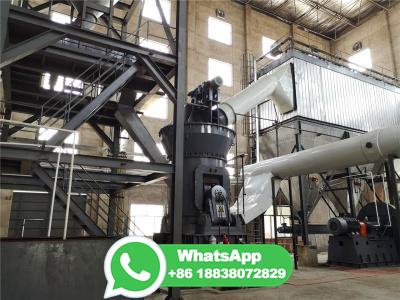
WEBCoal Conversion. Michael A. Nowak, ... Adrian Radziwon, in Encyclopedia of Energy, 2004. 2 Pyrolysis and Coking. Although combustion is an exothermic reaction involving stoichiometric amounts of oxygen and achieving flame temperatures as high as 1650°C, coal pyrolysis is an endothermic process. When coal is heated, it undergoes thermal .
WhatsApp: +86 18203695377
WEBNov 10, 2023 · Resource Utilization: Destructive distillation allows for the efficient utilization of organic resources such as coal, wood, and biomass. By breaking down complex compounds into simpler forms, it enables the extraction of valuable components like gases, liquids, and solid residues.
WhatsApp: +86 18203695377
WEBNov 1, 2021 · process using two simulation models is the cooled vapor phas e ratio of 89%. In this ratio, the amount of energy consumed in the condenser unit is MJ/hour, and th e reboiler unit is M ...
WhatsApp: +86 18203695377
WEBThe Process of conversion of wood into coal by biochemical process is known as Carbonization. Carbonization is the term for the conversion of an organic substance into carbon or a carboncontaining residue through pyrolysis or destructive distillation.
WhatsApp: +86 18203695377
WEBAug 2, 2022 · The process of heating complex organic substances in the absence of air so that they break down into a mixture of volatile products, which are condensed and collected. At one time the destructive distillation of coal (to give coke, coal tar, and coal gas) was the principal source of industrial organic chemicals.
WhatsApp: +86 18203695377
WEBCoke is a grey, hard, and porous coalbased fuel with a high carbon content and few impurities, made by heating coal or oil in the absence of air—a destructive distillation process. It is an important industrial product, used mainly in iron ore smelting, but also as a fuel in stoves and forges when air pollution is a concern.
WhatsApp: +86 18203695377
WEBDestructive distillation of wood produces hundreds of compounds including tar, terpenes, turpentine and methanol together with a solid residue of charcoal. [7] [8] Destructive distillation of a ton of coal can produce 700kg of coke, 100 liters of liquor ammonia, 50 liters of coal tar and 400 m 3 of coal gas.; Destructive distillation is an increasingly .
WhatsApp: +86 18203695377
WEBOct 11, 2019 · The two important products obtained from the destructive distillation of coal are: Coal gas and coal tar. The residue left in this process is coke. Coke is used mainly as a reducing agent in the extraction of metals. Question 8. Where do we get coal and how is it formed? Answer: We get coal deep in the earth's crust in coal mines.
WhatsApp: +86 18203695377
WEBJun 21, 2021 · Coal is still being used as a kitchen fuel in some s, dhabas and restaurants. Many useful products, like coke, coaltar and coal gas, are made by processing coal. Destructive distillation: When any substance is heated in the absence of air to form a number of different products, the process is known as destructive .
WhatsApp: +86 18203695377
WEBSolution. The nature of the products of the destructive distillation of bituminous coal, in absence of air, depends largely upon the temperature at which the process is carried out. When such coal is heated to 450°500° C. it yields gas and oily vapours consisting chiefly of paraffin hydrocarbons.
WhatsApp: +86 18203695377
WEBFeb 9, 2019 · Its CAS number is . It is acidic in nature and is water insoluble. Coal tar represents a mixture of condensable volatile products formed during the destructive distillation of bituminous coal. Composition is variable, but generally consists of 0 % to 2 % of light oils (chiefly benzene, toluene, and xylene), 16 % to 18 % of middle .
WhatsApp: +86 18203695377
WEBNov 4, 2018 · Compare and contrast the use of coal and coke as fuels. Describe the process of destructive distillation and apply it to the process of converting coal to coke in the blacksmith's forge. Explain how blacksmiths shape iron in the forge and the science behind it. Materials. Access to research materials (library books, World Wide Web)
WhatsApp: +86 18203695377
WEBThe brown variety of coal is (a) lignite (b) peat (c) anthracite (d) bituminous. Answer. Answer: (a) lignite. Question 12. The major constituent of natural gas is/are (a) butane (b) methane (c) hydrogen (d) ethane. Answer. Answer: (b) methane. Question 13. The product obtained by destructive distillation of coal is (a) coal tar (b) coke (c ...
WhatsApp: +86 18203695377
WEBFeb 19, 2012 · When coal is heated without air, it does not burn but produces many byproducts. This process of heating coal in the absence of air is called destructive distillation of coal. The main by products are: coke; coal tar; amino acid liquor; coal gas; The destructive distillation of coal can be carried out in the laboratory.
WhatsApp: +86 18203695377
WEB(a) Destructive Distillation: When a substance is heated in the absence of air. The process is called destructive distillation. Products formed are: Coke, Coal tar, Coal gas, and ammonia solution (b) Wood charcoal has a porous surface that can absorb liquids and gases. It is used in water filters and gas masks.
WhatsApp: +86 18203695377
WEBWhen coal is heated in the absence of air, then it is called destructive distillation of coal. We get many products like coke, coal tar and coal gas. Coke is a solid residue left after destructive distillation.
WhatsApp: +86 18203695377
WEBNov 12, 2023 · Coal Tar Production. Destructive distillation of coal is one of the oldest and most wellestablished appliions of this process. When coal is heated in the absence of air, it undergoes a complex transformation, yielding a wide range of byproducts. The most notable product is coal tar, a dark, viscous liquid.
WhatsApp: +86 18203695377
WEBThe process of forming substances in the presence heat and limited amount of air is called destructive distillation. Lignite is the hardest coal which contains almost 86% of carbon content. Answer
WhatsApp: +86 18203695377
WEBIn destructive distillation, coal is heated strongly to about (a) 5000 °C. (b) 1000 °C. (c) 100 °C (d) 10,000 °C. Answer: ... Process of fractional distillation of crude oil is as follows: Crude petroleum is heated and converted into gas. The gases enter the bottom of a long column (fractional distillation column), which is filled with ...
WhatsApp: +86 18203695377
WEBTHE destructive distillation of wood is one of the earliest industries known to man. The need of charcoal for fuel and for the smelting of iron was the primary aim of the undertaking. Up to the ...
WhatsApp: +86 18203695377
WEBManufacturing process. Coal tar is obtained by cooling the gas that is formed during the destructive distillation of coal to approximately ambient temperature. It is a black, viscous liquid composed primarily of a complex mixture of condensedring aromatic hydrocarbons. It may contain phenolic compounds, aromatic nitrogen bases and their alkyl ...
WhatsApp: +86 18203695377
WEBCannel coal of the Pennsylvanian subperiod from NE Ohio used to produce coal oil. Coal oil is a shale oil obtained from the destructive distillation of cannel coal, mineral wax, or bituminous shale, once used widely for illumination.. Chemically similar to the more refined, petroleumderived kerosene, it consists mainly of several hydrocarbons of the alkane .
WhatsApp: +86 18203695377
WEBMay 12, 2024 · Coke, coal tar and coal gas are the main products of the destructive distillation of coal. Peat, lignite, bituminous and anthracite are the four types of coal. Petroleum is also called crude oil or black gold. Fractional Distillation: The process of refining petroleum in refineries based on their boiling points.
WhatsApp: +86 18203695377
WEBDestructive distillation: The process of heating coal in the absence of air is called the destructive distillation of coal. Coal contains a number of elements such as carbon, hydrogen, oxygen, nitrogen, and sulfur. The tube is kept horizontally and another tube (water containing ) is fixed vertically.
WhatsApp: +86 18203695377
WEBTown Gas. Town gas is a flammable gaseous fuel made by the destructive distillation of coal and contains a variety of calorific gases including hydrogen, carbon monoxide, methane, and other volatile hydrocarbons, together with small quantities of noncalorific gases such as carbon dioxide and nitrogen, and is used in a similar way to natural gas.
WhatsApp: +86 18203695377
WEBThe process of heating coal in the absence of air is known as the destructive distillation of coal. Coke, coal tar and coal gas are the byproducts obtained during the destructive distillation of coal. Suggest Corrections.
WhatsApp: +86 18203695377
WEBDistillation separates two or more liquid components in a mixture using the principle of relative volatility or boiling points. The greater the difference in relative volatility the greater the nonlinearity, and the easier it is to separate the mixture using distillation. The process involves the production of vapor by boiling the liquid ...
WhatsApp: +86 18203695377
WEBJun 19, 2018 · The various products of coal which are obtained after the destructive distillation of coal are; 1. coal tar gas 3. coke Coal tar is a black liquid with an unpleasant is a mixture of as many as 200 compounds. compounds obtained such as benzene, toluene,phenol etc are used for making medicines, dyes, paints, pesticides .
WhatsApp: +86 18203695377
WEBMay 15, 2023 · Name the process of conversion of wood into coal. Answer: Carbonisation. Class 8 Coal And Petroleum Extra Questions Question 7. ... The two important products obtained from the destructive distillation of coal are: Coal gas and coal tar. The residue left in this process is coke. Coke is used mainly as a reducing agent in the extraction of .
WhatsApp: +86 18203695377
WEBAnswer: a) Statement 1 is correct as coal gas is indeed a mixture of hydrogen, carbon monoxide, methane, and other gases. However, statement 2 is incorrect because coal gas is obtained during the process of destructive distillation of coal, not during the processing of coal to get coke. 3.
WhatsApp: +86 18203695377
WEBApr 22, 2021 · O Level Revision : Combined Science Science in Energy Uses Fuels. Fuels are materials that are burnt to provide heat or chemical energy. Fuels can be gases, liquids or solids. There are natural and manmade fuels. Some fuels are more efficient than others. Engines are machines designed to convert chemical energy into other forms of .
WhatsApp: +86 18203695377
WEBDestructive distillation of coal is of two broad egories, those which release small molecular side groups attached to the macromolecular network and those which break bonds holding the network together [10]. ... The separators are equipped with water cooling system and digital pyrometer for monitoring the process temperatures. The closest ...
WhatsApp: +86 18203695377